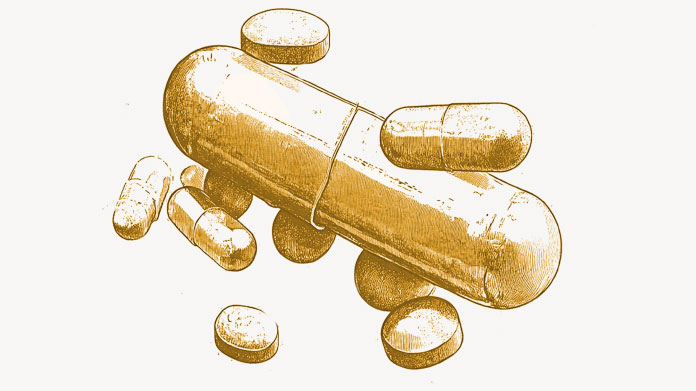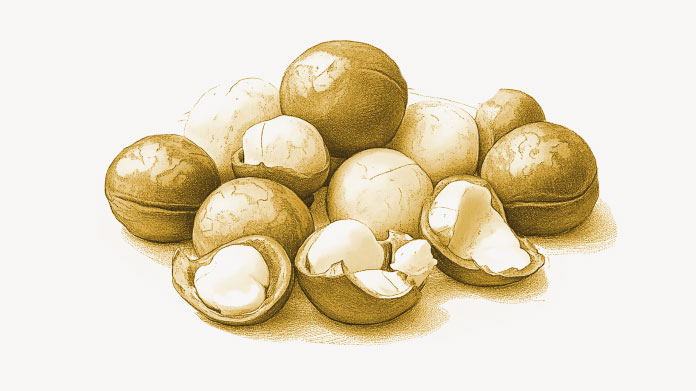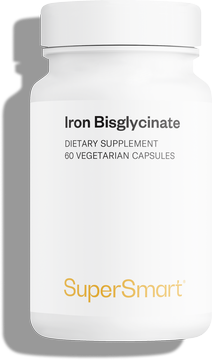
A dietary supplement starts off as an idea
The process starts with a supplement company deciding to develop a new product. It could be a single substance (for example, a zinc orotate) supplement, or a formulation combining various compounds (such as a synergistic formula for the hair). The aim is to create a supplement that responds to a particular health or aesthetic concern, introduce a substance to the market which has been requested by customers, etc.
At SuperSmart, the final concept is the result of discussions between management, the scientific director and the procurement manager. The decisions taken are always based on the very latest scientific studies (tests, clinical trials …). Raw materials and doses are chosen for their ability to deliver powerful effects and optimal safety.
Then it’s over to the manufacturing laboratories
Once a concept has been ‘given the green light’, the company contacts one of its manufacturing laboratories to get the production process underway, starting with the encapsulation of the raw materials selected.
Close-up on the raw materials in supplements (vitamins, plant extracts …)
Let’s focus for a moment on the base materials used in supplements. These raw materials are provided by two types of supplier: the manufacturers direct or distributors (who are usually able to offer larger volumes). Origin, purity, method of collection, bioavailability ... - all these criteria are considered by SuperSmart.
These raw materials include vitamins, minerals, probiotic micro-organisms, etc. Commercial vitamin C, for example, is usually obtained from corn or wheat, the starch of which is converted into glucose. From this comes sorbitol which is itself converted into diacetone-2-keto-L-gulonic acid, re-structured to produce the well-known vitamin. Finally, the vitamin C is purified by recrystallisation.
When it comes to plants, there are two kinds of raw material - powders and extracts. With the first, the plant is dried and pulverised to produce a sievable powder. With the second, the active principles are extracted by macerating the plant (steeping it in a solvent). The solvent is then removed from the liquid extract by drying, resulting in the dry extract proper (1). SuperSmart primarily uses extracts as they offer the important advantage of being able to be titrated, which means the precise amount of active principles can be continually measured and adjusted: our ginseng extract, for example, is standardised to 30% ginsenosides. With titration, we can ensure the amount of ginsenosides remains consistent across all batches.
Note: some plant-based supplements are also sold in liquid form (such as our liquid extract of Desmodium or one of our stimulant formulations).
Production of capsules and role of excipients
As mentioned, the manufacturing laboratory is responsible for putting these raw materials into capsules (with the aid of an encapsulator) or making them into tablets (using a compression machine). For this, the raw materials are normally combined with excipients.
Excipients can fulfil several roles: they can make it easier to fill the capsules in the machines, act as support for the nutrients, solubilise a hydrophobic substance in a solution, preserve the active principle for longer ... SuperSmart always uses natural excipients (acacia gum, rice flour …) and whenever possible, no excipients at all.
Some supplements are also delivered in gastro-resistant capsules (such as DRCaps™, used for many probiotics - this type of capsule optimises the microorganisms’ survival as far as the gut) (2).
The content of a supplement is, of course, rigorously analysed throughout the production process and each product is given a certificate of analysis (which is always available on the SuperSmart product description page).
Supplement journey: the last stages before marketing
The laboratory then places the capsules or tablets in blister packs or containers which are labelled, sealed and packaged before being dispatched to a specialist warehouse - a hub for various manufacturing laboratories. The new supplements can now be marketed on the Internet or in retail outlets.
For on-line supplement companies, it just remains to upload the detailed product sheet to their website. Customers can then place and receive their order, and benefit from the positive health effects of their newly-developed supplement.
References
- Abubakar AR, Haque M. Preparation of Medicinal Plants: Basic Extraction and Fractionation Procedures for Experimental Purposes. J Pharm Bioallied Sci. 2020 Jan-Mar;12(1):1-10. doi: 10.4103/jpbs.JPBS_175_19. Epub 2020 Jan 29. PMID: 32801594; PMCID: PMC7398001.
- Wang G, Chen Y, Xia Y, Song X, Ai L. Characteristics of Probiotic Preparations and Their Applications. Foods. 2022 Aug 16;11(16):2472. doi: 10.3390/foods11162472. PMID: 36010472; PMCID: PMC9407510.
6 Days
The products I use are excel·lent
The products I use are excel·lent
ROSAS Josep Maria
14 Days
Delivery is prompt and I never saw a…
Delivery is prompt and I never saw a quality problem with the manufacturing. It is not possible to assess efficacy on a personal basis, since too many factors come into play. Efficacy can only be assessed statistically with a sufficient number of cases.
Roger De Backer
15 Days
I collaborates with the Supersmart…
I collaborates with the Supersmart more than 10 years. Every thing is going good. Quality of the things is good. Delivery comes in time. Five stars definitely !!!
Oleksiy
15 Days
All good
Simple, frictionless site, easy ordering, good delivery updates and execution.
Chris Robbins
17 Days
I feel better
I feel better
Peter Ammann
17 Days
Prompt delivery
Prompt delivery
JAKUB Radisch
18 Days
My new go-to for top quality supplements!
I am buying more and more of my supplements from this superb, high quality company. Cannot recommend it enough. Plus, excellent customer service with a quick, helpful team and speedy deliveries. Highly recommend Supersmart!
Cecilie H.
22 Days
SUPERSMART WHAT ELSE👍
SUPERSMART WHAT ELSE👍
DIEDERLE Christophe
25 Days
Excellent quality products with…
Excellent quality products with innovative formulas, as someone who has been suffering with acid reflux, these supplements have been lifesavers.
Oriana Moniz
25 Days
high quality supplement!
high quality supplement!
GALANT
26 Days
Good service prompt delivery
Good service prompt delivery
Mrs Marcella Reeves
30 Days
I like your clear explanation
I like your clear explanation. And how to make a choice of products for a specific health problem
Ingrid
37 Days
Great product and it arrives quickly.
Great product and it arrives quickly.
SOMMARIVA Gianni
38 Days
Excellent products and fast service.
Excellent products and fast service. What do we need more?
Margarida
42 Days
The variety of products is amazing
The variety of products is amazing, the offers are good and the sending is very fast. I just miss having a bit more of guidance about combinations, possible interactions, etc.
Maria Angeles Verdu





